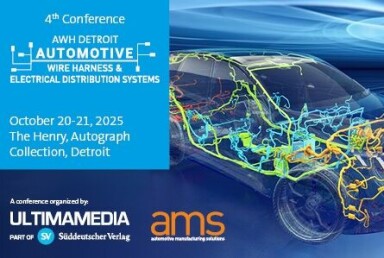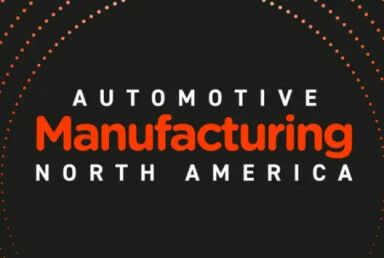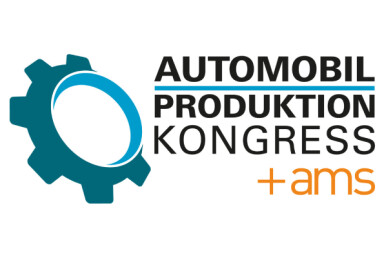
How AI is transforming automotive manufacturing: A deep dive into key technologies, optimisations and efficiency gains
Automotive production is undergoing a seismic transformation with Artificial Intelligence driving unprecedented innovation. From predictive maintenance to autonomous robotics and generative design, here’s how AI is enhancing precision, adaptability and efficiency.
The automotive industry is accelerating toward a future defined by automation, efficiency and precision. At the heart of this transformation is artificial intelligence (AI), a technology redefining every aspect of manufacturing—from predictive maintenance to autonomous robots. The once-static assembly line has evolved into an adaptive, intelligent ecosystem, enabling manufacturers to meet the demands of a rapidly changing market. This article explores the key AI technologies shaping automotive manufacturing, uncovering how machine learning (ML), deep learning (DL) and other innovations are driving efficiency, quality and innovation like never before.
Types of AI in Automotive Manufacturing
Machine Learning (ML): Enhancing efficiency through data
Imagine an assembly line that learns and improves with every vehicle produced. This is the promise of machine learning (ML), a foundational AI technology enabling systems to optimise processes and make data-driven decisions.
At its core, ML uses algorithms to analyse vast datasets, identifying patterns and making decisions that improve operational efficiency. A prominent application is predictive maintenance, where ML models analyse sensor data from machinery to anticipate potential failures before they occur. This reduces unplanned downtime, saves costs, and extends equipment lifespan.
ML is the backbone of ”smart factories,” where IoT devices and sensors create interconnected environments. These adaptive systems respond in real time to demand fluctuations or operational challenges, making them critical for modern manufacturing.
| Company | Application of Machine Learning | Outcome/Impact |
|---|---|---|
BMW | Enhancing assembly line efficiency by identifying and resolving bottlenecks | Maintains seamless production and reduces delays |
Tesla | Monitoring and optimising battery performance in electric vehicles | Enables longer battery lifespans and greater reliability |
Continental | Ensuring consistency in tire production using data-driven insights | Detects anomalies and maintains high-quality production standards |
GM | Using ML in defect detection during vehicle assembly | Enhances product quality by identifying defects early in the production process |
Ford | ML algorithms for autonomous vehicle simulations | Accelerates testing and development cycles for self-driving technology |
Volkswagen | Implementing ML for energy efficiency in factories | Reduces energy consumption and lowers |
Deep Learning (DL): Precision and adaptability
Deep learning (DL), a subset of ML, goes a step further by mimicking the structure of the human brain. It excels in processing unstructured data like images and videos, enabling advanced applications such as visual inspection. This technology has major implications for automotive manufacturing across several areas from bodyshop, press and stamping, to paintshop and assembly.
For example, DL-powered systems can detect microscopic defects in components – flaws invisible to the human eye – ensuring consistent quality standards, above the range that would be achievable by in their absence or by more ‘manual’ processes. These systems outperform traditional methods by identifying anomalies invisible to the human eye or conventional cameras.
Beyond quality control, DL is making waves in collaborative robotics. Cobots equipped with DL algorithms dynamically adapt to their environments, performing tasks like welding and painting with unparalleled precision. The integration of DL into predictive analytics further enables manufacturers to make real-time adjustments, optimising production processes on the fly. This adaptability ensures manufacturers can maintain precision even in complex, fast-paced environments.
| Company | Application of Deep Learning | Outcome/Impact |
|---|---|---|
Audi | Detecting welding anomalies | Improves structural integrity and enhances vehicle safety |
Hyundai | Engine assembly fault detection | Identifies potential faults early, reducing waste and boosting productivity |
Bosch | Automated visual inspection of components | Ensures only flawless components proceed, maintaining high quality standards |
BMW | Developing deep learning models for advanced driver-assistance systems (ADAS) | Enhances vehicle safety and driver assistance features |
Tesla | Utilising deep learning for autonomous driving capabilities | Advances self-driving technology and vehicle autonomy |
Toyota | Implementing deep learning in predictive maintenance systems | Reduces equipment downtime and maintenance costs |
Generative AI: Redefining innovation
Generative AI is transforming the creative process in automotive manufacturing. By exploring countless permutations of designs and processes, it delivers solutions that balance performance, cost and efficiency. Picture engineers testing dozens of design iterations within minutes – generative AI makes this possible. This capability is particularly transformative in areas like prototyping, where generative AI accelerates development cycles and reduces costs by suggesting novel, high-performance designs.
One major trend in generative AI is its integration with CAD (Computer-Aided Design) tools, allowing engineers to automate the exploration of design possibilities. These systems not only generate designs but also test them against performance parameters, resulting in innovative solutions that are lightweight, durable, and sustainable. Generative AI also extends its impact to workforce training, creating realistic virtual simulations that replicate factory conditions. These environments enhance skills and safety awareness, preparing teams for the complexities of modern manufacturing.
| Company | Application of Generative AI | Outcome/Impact |
|---|---|---|
General Motors | Designing lightweight components to reduce material usage while maintaining strength | Improved fuel efficiency and vehicle performance |
Ford | Virtual prototyping for vehicle design, enabling rapid iteration and refinement | Accelerated design processes and reduced time-to-market |
Nissan | Optimising vehicle aerodynamics to enhance fuel economy and reduce emissions | Enhanced vehicle efficiency and compliance with environmental standards |
Audi | Expanding capabilities of in-car assistants using generative AI | Enhanced user experience with more intuitive and responsive in-car assistance |
Volkswagen | Developing AI-powered smartphone assistants for vehicle maintenance and dashboard information | Improved driver assistance and vehicle maintenance support |
BMW | Using Generative AI to optimise robotic processes in manufacturing | Enhanced efficiency and flexibility in robotic assembly lines, enabling faster production and higher precision |
Robotic Process Automation (RPA): Streamlining operations
RPA is revolutionising the repetitive and time-consuming tasks in automotive manufacturing by automating workflows and processes with minimal human intervention. At its core, RPA employs software robots to handle rule-based tasks such as data entry, scheduling, and reporting with speed and accuracy. This enables manufacturers to focus human resources on strategic and high-value operations, significantly boosting productivity and efficiency.
Current trends in RPA highlight its integration with AI-driven analytics and decision-making systems, evolving simple automation into intelligent automation. In the automotive sector, RPA supports production by automating quality checks and compliance reporting. An emerging trend is the deployment of RPA to enhance customer service by automating order tracking and post-sales support, ensuring faster response times and greater customer satisfaction.
| Company | Application of Robotic Process Automation (RPA) | Outcome/Impact |
|---|---|---|
Toyota | Monitoring and managing real-time inventory levels | Ensures seamless supply chain coordination and reduces waste |
Mercedes-Benz | Automating invoice processing and reconciliation of accounts payable | Significantly reduces errors and processing times |
Volkswagen | Handling vendor communications | Improves transparency and response times in global operations |
BMW | Automating compliance reporting | Streamlines regulatory adherence and enhances operational efficiency |
JLR | Automating accounts payable and invoice reconciliation | Increases accuracy, reduces compliance risks, and saves time, equating to over £1 million in reinvested savings |
Optimisation algorithms: Maximising resource efficiency
In an industry where every second counts, optimisation algorithms are critical for ensuring resources are used to their fullest potential. These mathematical models analyse variables like costs, time, and material availability to deliver the most efficient solutions. Optimisation algorithms are particularly valuable in production scheduling, where they ensure that machinery, labour, and materials are utilised to their maximum potential, minimising waste and delays while increasing throughput.
Current trends in optimisation algorithms emphasise their integration with real-time data analytics, enabling manufacturers to make adaptive decisions in dynamic environments. For instance, these algorithms can adjust production schedules in response to supply chain disruptions or fluctuating customer demands, ensuring continuous efficiency.
As manufacturers transition to electric vehicles (EVs), optimisation algorithms play a vital role in improving battery design and production processes. By identifying the most efficient configurations, these tools accelerate EV adoption while reducing production costs. Another trend is their application in energy management, where optimisation tools help factories reduce energy consumption by identifying the most cost-effective and sustainable operating parameters.
| Company | Application of Optimisation Algorithms | Outcome/Impact |
|---|---|---|
Honda | Balancing assembly lines | Minimises bottlenecks and maintains workflow continuity |
Renault | Optimising energy consumption across production facilities | Achieves significant cost savings and reduces the carbon footprint |
Stellantis | Optimisation in logistics and parts distribution | Ensures timely delivery of components while minimising transportation costs |
BMW | Implementing hybrid optimisation algorithms in manufacturing processes | Enhances production efficiency and reduces operational costs |
Toyota | Utilising machine learning-based optimisation for design and innovation | Improves product design and accelerates innovation cycles |
Top use cases of AI by function
Predictive maintenance
The cost of unplanned downtime can be staggering, but predictive maintenance is helping manufacturers avoid these disruptions. Using advanced machine learning algorithms, predictive maintenance systems analyse data from sensors embedded in manufacturing equipment to detect anomalies and foresee potential failures. This approach allows manufacturers to address issues before they escalate, minimising unexpected disruptions and extending the lifespan of critical machinery.
Predictive maintenance uses IoT-enabled sensors to capture real-time data such as temperature, vibration, and pressure from equipment, which AI models then analyse to predict potential breakdowns. BMW is a leader in this space, integrating predictive maintenance across its facilities to monitor equipment health and optimise repair schedules. By extending machinery lifespan and minimising unexpected downtime, manufacturers save significantly on operational costs. The advent of edge computing has further enhanced these systems, enabling faster predictions and immediate actions, ensuring a smoother production process.
Moreover, advancements in edge computing allow manufacturers to process data locally, enabling faster predictions and actions. This integration of AI and IoT establishes a foundation for smarter, self-sustaining manufacturing ecosystems, ensuring long-term reliability and efficiency.
Quality control and defect detection
Quality control and defect detection represent another transformative use case of AI in automotive manufacturing. Traditional quality control processes rely heavily on manual inspections, which can be time-consuming and prone to human error. AI, particularly deep learning models, revolutionises this function by enabling automated, high-precision defect detection.
AI systems use computer vision to analyse images and videos captured during production, identifying defects such as scratches, misalignments, or inconsistencies. Advanced computer vision systems powered by AI analyse visual data from cameras installed on production lines, identifying even the most minute defects in components or finished products. Audi, for example, uses AI-driven visual inspection systems to enhance the quality of welded joints in vehicle assembly. These systems detect imperfections and also provide real-time feedback, enabling immediate corrections.
The growing use of AI in predictive quality systems allows manufacturers to anticipate potential defects before they occur, leveraging historical production data and real-time analytics.
Process Optimisation with digital twins
Digital twins—virtual replicas of physical operations—are among the most transformative tools in modern manufacturing. These digital twins simulate every aspect of a manufacturing process from machinery performance to material flow, providing invaluable insights for optimisation. By integrating AI into digital twin models, manufacturers can analyse vast amounts of data, identify inefficiencies, and test process improvements in a virtual environment before implementing them in the real world.
Ford uses AI-powered digital twins to simulate assembly line scenarios, identifying bottlenecks and streamlining workflows. Daimler employs this technology in engine manufacturing, optimising design and performance under various conditions.
The use of digital twins in energy management is another emerging trend, where simulations help optimise energy consumption across factories. By monitoring real-time data and feeding it back into the virtual model, manufacturers can ensure dynamic adjustments to operations, improving efficiency and sustainability.
Autonomous manufacturing
Autonomous manufacturing represents the pinnacle of AI application in the automotive industry, where entire production lines operate with minimal human intervention. AI-driven robotics and autonomous systems collaborate seamlessly to execute complex manufacturing tasks, from material handling to intricate assembly processes. This level of automation enhances precision, reduces labour costs, and enables round-the-clock production.
Tesla’s Gigafactories exemplify autonomous manufacturing, with AI-powered robots managing nearly every stage of production, including the assembly of battery packs and electric drivetrains. These robots work alongside AI systems that optimise workflows in real time, ensuring maximum efficiency. Autonomous manufacturing also incorporates collaborative robots, or cobots, which work alongside human operators to perform repetitive or hazardous tasks. Ford uses cobots in its production lines to assist workers in assembling intricate components, reducing fatigue and improving accuracy.
Autonomous manufacturing extends to automated material transport systems, where AI manages the flow of components between workstations, reducing waiting times and maximising throughput. Additionally, the integration of AI with additive manufacturing techniques, such as 3D printing, allows for on-demand production of complex components, further enhancing flexibility. By combining human ingenuity with machine precision, AI-powered autonomous manufacturing enables OEMs to meet the growing demand for high-quality vehicles while maintaining flexibility in production.
Next generation of automotive manufacturing with AI
The future of AI in automotive manufacturing is poised to be transformative, with emerging technologies redefining every aspect of production. Picture a factory floor where machines not only operate but learn and improve collaboratively. Innovations such as federated learning, edge AI, and real-time data analytics are set to revolutionise how manufacturers operate. For example, federated learning enables multiple manufacturing plants to collaboratively train AI models while maintaining data privacy, fostering smarter decision-making across the industry.
Meanwhile, edge AI—which processes data locally at the source rather than relying on centralised cloud servers—is proving indispensable in enhancing speed and reducing latency during critical operations. This advancement is particularly impactful in predictive maintenance and autonomous robotics, where real-time decision-making can mean the difference between seamless production and costly downtime. As these technologies mature, they are increasingly aligning with Industry 4.0 principles, setting the stage for smarter and more resilient manufacturing ecosystems.
This technological shift is driven by a surge in industry investments, accelerating AI adoption in automotive manufacturing. Leading automakers like Tesla, Toyota, and BMW are spearheading this transformation by establishing dedicated AI research centres focused on generative design, autonomous systems, and energy optimisation. Imagine collaborative efforts between automakers and tech firms reshaping the landscape: breakthroughs in materials science and digital twins are making sustainable and efficient production methods a reality. Government initiatives and subsidies for smart manufacturing amplify this momentum, particularly in regions like Europe and Asia, where the race to modernise automotive production has reached a fever pitch.


